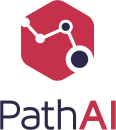Boston is the birthplace of some of the world’s most promising and futuristic technology.
From prosthetic limbs designed with 3D printing to small robots that can carry your groceries home, the city’s brightest minds are transforming the ways that we — mere humans — live our daily lives.
We caught up with three local engineers to get the inside scoop on the tech they use to make it all happen.

Piaggio Fast Forward offers a unique alternative to helping people and goods move around town. The company produces lightweight mobility solutions like Gita, the mobile carrier that can follow its human companion while carrying up to 45 pounds of groceries, yoga gear or picnic supplies.
Full Stack Developer Nick Balboni explained the ins-and-outs of Piaggio Fast Forward’s tech stack.
What does your tech stack look like these days? What are some of your favorite facets of it?
For our mobile app environment, our tech stack is a lot of JavaScript. We use React-Native for the app and FeathersJS (Node.js + Express) with MongoDB for the API server. Using JavaScript across the board speeds up development time because we don’t need to spend as much time switching mindsets from writing app code to writing endpoint code. It also allows us to write utilities and libraries that we can share between both projects. React-Native is amazing because it allows us to minimize the amount of Java and Objective-C code we have to write for the iOS and Android applications.
Choosing the right tech can have a huge impact on minimizing development time and bugs.”
How do you choose what tech to use to complete a project?
Choosing the right tech can have a huge impact on minimizing development time and bugs. When I choose the tech for a project, I account for all of the unique elements in order to determine the languages and tools that best support the project’s specific criteria. With our API server, for example, we knew that we needed to build several database collections that provided external access via RESTful endpoints, and that we needed to build it fast. FeathersJS was a perfect choice because it encapsulated that structure by default and removed a lot of boilerplate that would have remained if we’d just used a plain Node.js and Express solution.

Cantina is a fast-growing digital design and development agency. The company turns the digital dreams of startups and enterprises into a reality. Those dreams include mobile product development, internet of things implementations, responsive design and more.
SVP of Engineering Jay Dolan told us more about how his team selects the tech used for bringing a client’s dream to life.
What does your tech stack look like these days? What are some of your favorite facets of it?
Our tech stack is a little bit of everything. We're a digital strategy, design and development agency that is geographically focused on clients in the New England area, and particularly in the greater Boston area. We've always cast a broad net in terms of the technologies that we use in order to build a diverse clientele in this area, and to offer our clients a “best tool for the job” engineering philosophy. We're a Node shop, a React shop, a Java shop, a Swift shop, a Python shop, a Unity shop, and everything else in between. The variety in our project work offers our engineers exposure to so many interesting technologies, which is an opportunity that not every company can offer.
Our tech stack is a little bit of everything.”
How do you choose what tech to use to complete a project?
There are many factors in determining a tech stack for a client project at Cantina. That's what the technical design phase of our projects is all about: developing a living technical blueprint for the system-to-be. During a technical design, we'll break a business problem down into components and services, and where we see complexity, we'll develop proofs of concept. This allows us to test fit different languages, frameworks, databases and cloud services for ease of use, speed of development, scalability, etc. We tie those PoC's together into a reference architecture, as a way to document and communicate our technical design throughout implementation.

PathAI’s advanced technology helps accurately diagnose and treat millions of people suffering from diseases. Their intelligent pathology approach provides end-to-end, data-driven analysis for quick, accurate and standardized diagnoses.
Director of Design Engineering Peter Lazzarino described his favorite aspect of the team’s tech stack, including quality code and test writing.
What does your tech stack look like these days? What are some of your favorite facets of it?
Our front-end team is building our web app using Vue.js, Vuex and SCSS. We write unit tests with Jest, and we are kicking off a project to build an automated test suite using Cypress, which the team is really excited about! We also have a Vue-based design system called Anodyne that our engineering and design teams have collaborated on for a while. I have worked here for just a few months. So far, it has been great seeing teams come together to tackle really impactful projects like this one.
The focus on quality code and test writing is my favorite aspect. Every member of the team writes tests when they build something and wants to deliver quality results to customers. We also use the Gitlab CI/CD platform. I love how easy it is to spin up a new testing environment (thanks to lots of work by our teams), see the result of test runs, and deploy your code. There is nothing better than tools that get out of the way and let you get where you want to go without any friction.
We have assigned task forces for when a new technology or architecture decision is needed.”
How do you choose what tech to use to complete a project?
Over the past month, our front-end team held bi-weekly meetings to discuss taking on new initiatives, tackling tech debt, and demoing the work we’ve done. We have assigned task forces for when a new technology or architecture decision is needed. The goal of each task force is to research and design a plan of attack that balances our needs as engineers and the needs of our customers. The goal is to empower the team to make these decisions and to take more ownership over how we build software.







